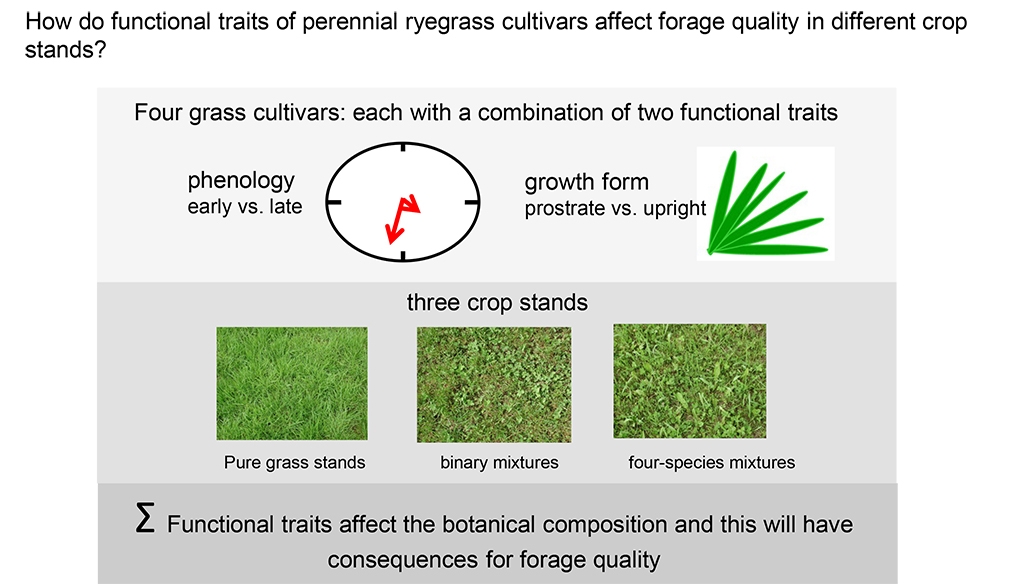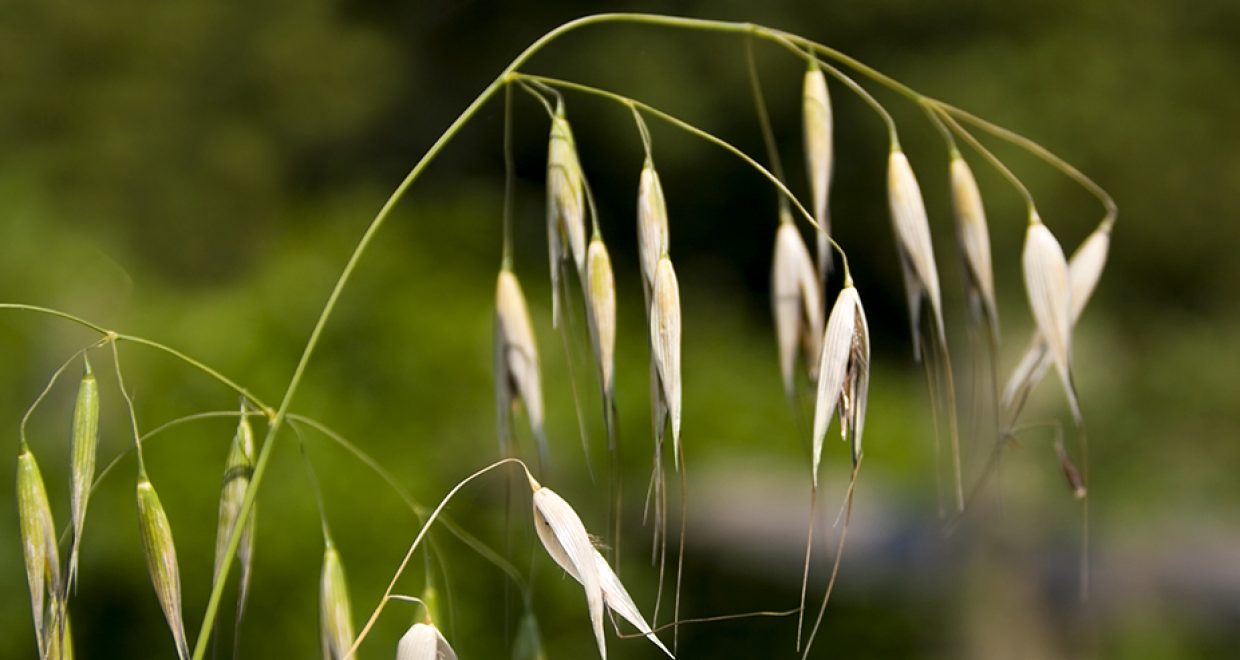Do functional traits of perennial ryegrass cultivars affect forage quality?
The importance of functional traits to explain ecological processes in natural or artificial plant communities has become a major topic as reflected in the continuously growing trait databases (e.g. the TRY Plant Trait Database https://www.try-db.org/TryWeb/Home.php). Perennial ryegrass (Lolium perenne L.) breeding has improved functional traits, which are specific properties developed by or within functional groups of species, such as the growth form or the phenology of cultivars. These usually affect the ability of cultivars to withstand competition by companion species in mixed pastures. The most prominent mixture for ruminant livestock production in north-western Europe is perennial ryegrass and white clover (Trifolium repens L.) as nitrogen-fixing component. Recently, farmers have become aware of the fact that a greater functional diversity of sown mixtures is beneficial for their enterprise. Thus, dicotyledonous forbs or herbs such as plantain (Plantago lanceolata L.) are becoming an important component in mixtures worldwide. The study reported here focused on two central questions which have not so far been answered:
Firstly, to what extent is the variability of forage quality attributed to functional traits of perennial ryegrass cultivars sown in pure stands?
Secondly, does this variability in forage quality caused by functional traits translate into mixtures or not?
Four perennial ryegrass cultivars differing in growth form (prostrate vs. upright) and phenology (early vs. late) were grown in a field experiment as cultivar pure stands, binary mixtures with white clover or as four-species mixtures with plantain and dandelion (Taraxacum officinale L.). These crop stands were harvested three to four times per year over the duration of five years. The botanical composition and the crude protein, acid-detergent fibre and energy contents of the harvested biomass were then analysed.

The effect of functional traits was dominant in the primary growth and persisted in pure stands but not in the mixtures from the third year onwards. In mixtures, forage quality was generally higher in the last regrowth. Indirect effects of functional traits were caused by changes in the botanical composition within the mixtures. Prostrate cultivars allowed the development of a greater proportion of clover and forbs, resulting in increased protein and energy and reduced fibre contents. Late perennial ryegrass cultivars could be grown to promote white clover in spring. In conclusion, the indirect effects of growth form on forage quality due to modifications of botanical composition were more important than the direct effects on forage quality.
The article “Effects of functional traits of perennial ryegrass cultivars on forage quality in mixtures and pure stands“ by Martin Komainda and Johannes Isselstein was published in The Journal of Agricultural Science and is available free for a month.






